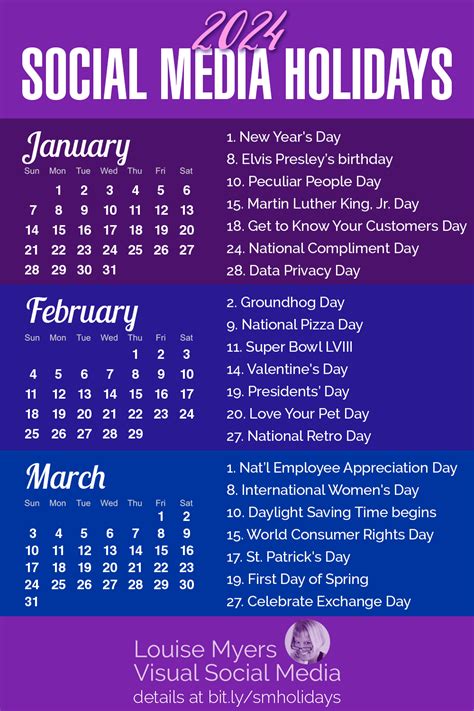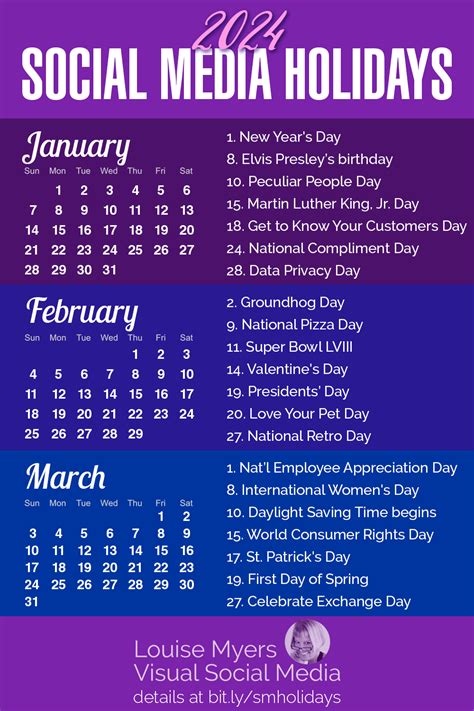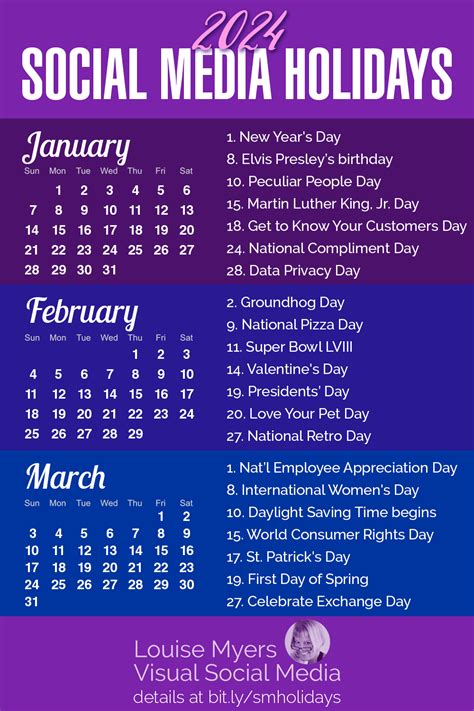Discover how to optimize your 2024 social media holiday calendar by understanding user data, analyzing interactions, and creating tailored content schedules. Measure impact and adjust strategy with data-informed insights.Welcome to our latest blog post, where we’ll be delving into the world of social media holiday planning and how to optimize your content calendar for 2024. In this digital age, understanding user data and interactions is crucial for any successful social media strategy. By analyzing user insights, we can create a data-informed approach to our content planning, ensuring that the content we create resonates with our audience. In this post, we’ll discuss the importance of understanding user data, analyzing user interactions, and implementing a data-informed strategy. We’ll also explore the process of creating a tailored content schedule and measuring the impact of our efforts, allowing us to adjust our strategy as needed. Join us as we uncover the secrets to utilizing user insights to optimize your social media holiday calendar for the year ahead.
Understanding User Data
Understand user data is crucial for any business or organization looking to optimize their social media strategy. By gathering and analyzing user data, you can gain valuable insights into who your audience is, what content interests them, and how they interact with your brand. This information is vital for creating a targeted and effective social media plan.
One way to gather user data is through user interactions on your social media platforms. By tracking likes, comments, shares, and other engagement metrics, you can see which types of content resonate with your audience. This can help you tailor your social media calendar to include more of what your users are interested in, ultimately improving your overall impact.
Another important aspect of understanding user data is recognizing the role of analytics. Platforms like Facebook, Instagram, and Twitter offer detailed analytics tools that allow you to see who your followers are, when they are most active, and which types of posts perform best. By analyzing this data, you can gain insights into your audience’s behavior and preferences, allowing you to make more informed decisions about your social media content.
Utilizing user data to shape your social media strategy can also help you measure the impact of your efforts. By monitoring key metrics such as reach, engagement, and conversions, you can see how your content is performing and make adjustments as needed. This data-informed approach allows you to continuously optimize your social media calendar to better meet the needs and interests of your audience.
Analyzing User Interactions
Utilizing User Insights to Optimize Your 2024 Social Media Holiday Calendar
One of the most essential elements of optimizing your social media holiday calendar is analyzing user interactions. By understanding how your audience engages with your content, you can tailor your posting schedule to maximize reach and engagement. Through the use of analytics tools such as Facebook Insights, Instagram Analytics, and Twitter Analytics, you can track metrics such as likes, shares, comments, and clicks to gain valuable insights into what type of content resonates most with your audience.
When analyzing user interactions, it’s important to not just look at the surface-level numbers, but to dig deeper into the data to uncover trends and patterns. Are there specific times of day or days of the week when your audience is most active? Are there certain types of content, such as images or videos, that consistently receive higher levels of engagement? By asking these types of questions and delving into the data, you can gain a better understanding of what drives user interactions on your social media channels.
Once you’ve gained insights from analyzing user interactions, you can use this data to inform your content strategy moving forward. For example, if you find that your audience is most active in the evenings, you can schedule your posts accordingly to maximize reach. If you discover that certain types of content consistently perform well, you can prioritize creating more of that type of content to keep your audience engaged. By leveraging user insights, you can ensure that your social media holiday calendar is optimized to best meet the needs and preferences of your audience.
| Key Takeaways from Analyzing User Interactions: |
|---|
| Identify trends and patterns in user engagement |
| Use data to inform content strategy |
| Optimize posting schedule to maximize reach |
Implementing Data-Informed Strategy
Implementing a data-informed strategy is crucial for any successful social media marketing campaign. By analyzing user data and interactions, businesses can gain valuable insights into their target audience’s behavior, preferences, and engagement patterns. This information can then be used to inform the development of tailored content that resonates with the audience, as well as to optimize the timing and frequency of posts for maximum impact.
One effective way to implement a data-informed strategy is to utilize social media analytics tools to track key performance metrics such as reach, engagement, and conversion rates. These tools can provide valuable data on which types of content are performing well and which are falling short, allowing businesses to make data-informed decisions about their social media content calendar.
Another important aspect of implementing a data-informed strategy is to regularly measure the impact of social media activities and adjust the strategy accordingly. By monitoring the performance of different types of content and iterating on what works best, businesses can continuously optimize their social media presence and drive better results.
In conclusion, implementing a data-informed strategy is essential for optimizing a business’s social media marketing efforts. By leveraging user insights and analytics, businesses can create a tailored content schedule that resonates with their audience and achieve better results in their 2024 social media holiday calendar.
Creating Tailored Content Schedule
Creating a tailored content schedule involves leveraging user data to understand when your audience is most active and engaged on social media. This means analyzing user interactions on different platforms to identify trends and patterns in their behavior. By doing so, you can optimize the timing of your posts to ensure maximum visibility and impact.
One way to implement a tailored content schedule is by using a data-informed strategy that takes into account the preferences and habits of your target audience. This may involve conducting surveys or polls to gather insights directly from your followers, as well as utilizing social media analytics tools to track engagement metrics and identify peak times for posting.
Another important aspect of creating a tailored content schedule is ensuring that the content you publish is tailored to the interests and needs of your audience. This could involve segmenting your content calendar based on different audience segments, or creating personalized content that resonates with specific demographic groups.
Ultimately, the goal of creating a tailored content schedule is to measure the impact of your posts and adjust your strategy accordingly. This may involve tracking key performance indicators such as reach, engagement, and conversions, and using this data to optimize your social media holiday calendar for the upcoming year.
Measuring Impact and Adjusting Strategy
Measuring the impact of your social media strategy is crucial in determining the success of your efforts. By analyzing key metrics such as engagement, reach, and conversions, you can gain valuable insights into what is working and what needs improvement. Using tools such as Google Analytics and social media analytics platforms, you can track the performance of your content and campaigns to identify areas of strength and weakness.
Once you have gathered data on the performance of your social media efforts, it’s important to use this information to adjust your strategy accordingly. By identifying which types of content are resonating with your audience and driving the most engagement, you can tailor your content schedule to focus on these areas. Similarly, if you find that certain campaigns are falling flat, you can make adjustments to optimize their performance.
Implementing a data-informed approach to social media strategy allows you to continuously measure the impact of your efforts and make informed decisions about how to adjust your strategy for greater success. By using user insights to optimize your content calendar and campaign strategies, you can ensure that your social media efforts are effectively reaching and engaging your target audience.
Frequently Asked Questions
How can user insights help optimize a social media holiday calendar?
User insights can provide valuable information about the preferences and behaviors of your target audience, which can be used to choose the most relevant holidays to include in your calendar and to tailor your content to resonate with your audience.
What are some methods for gathering user insights?
Methods for gathering user insights include conducting surveys, analyzing social media engagement metrics, tracking website analytics, and using market research tools to understand consumer behavior.
Why is it important to optimize a social media holiday calendar?
Optimizing a social media holiday calendar can help businesses align their content with relevant holidays, connect with their audience on a more personal level, and capitalize on seasonal trends and opportunities.
How often should a social media holiday calendar be updated?
A social media holiday calendar should be regularly updated to reflect changes in consumer behavior, emerging trends, and new holidays or cultural events that may become relevant to your audience.
What are the potential benefits of utilizing user insights for social media planning?
Potential benefits of utilizing user insights for social media planning include improved content relevance, higher engagement rates, increased brand loyalty, and the ability to anticipate and capitalize on market opportunities.
How can businesses use user insights to create a more personalized social media holiday calendar?
Businesses can use user insights to identify the holidays and themes that are most relevant to their audience, to tailor their messaging and promotions based on user preferences, and to create a calendar that reflects the unique interests and values of their target demographic.
What are some common mistakes to avoid when utilizing user insights for social media planning?
Common mistakes to avoid include relying on outdated or inaccurate data, failing to consider the diversity of your audience, and overlooking the importance of genuine, meaningful connections with your followers.



